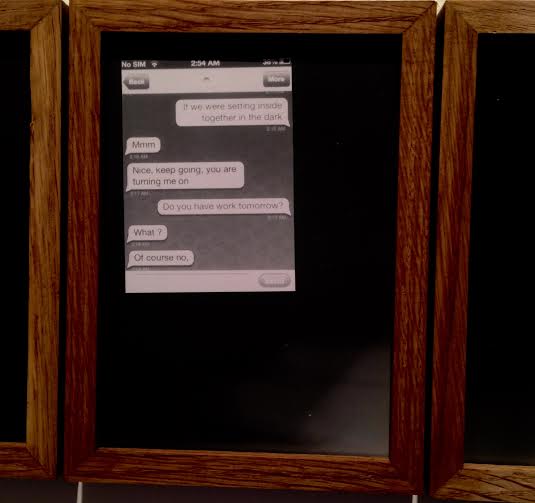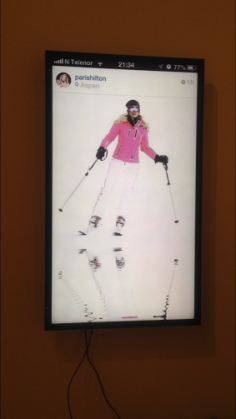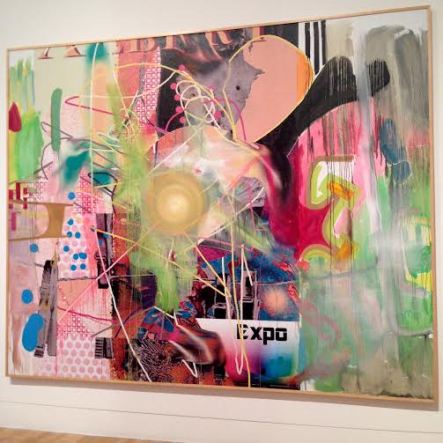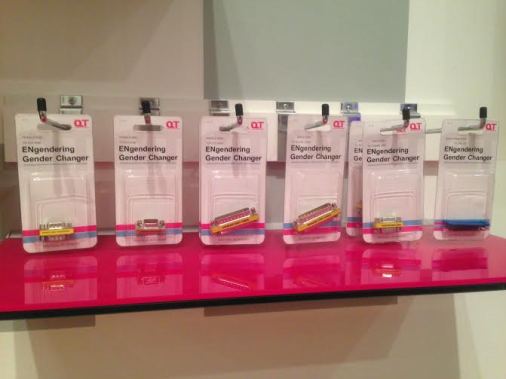We do love a good art fair, especially one that feels inclusive, unpretentious and fresh and Art16 really did tick all the boxes for us this year. We were invited to the press preview and I personally jumped at the opportunity to miss the crowds and to check out the art with less dodging of chinking Champaign glasses.
Bringing together over 100 galleries from more than 30 countries and taking place at the architecturally stunning Olympia, London, Art16 also showcased two specifically curated sections, Emerge and London First. Emerge offered presentations by galleries less than 6 years old with London First showcasing galleries who have never before participated in a London art fair. This really struck a cord with me and my over all sense of the fair being an inclusive opportunity for those less established in the art world.
There was also a place for not-for-profit exhibitors at Art16 this year including the Ruya Foundation, presenting a wide range of contemporary Iraqi artists and Art16’s charity partners START, a not-for-profit organisation running art workshops for refugees across the middle east and in India.
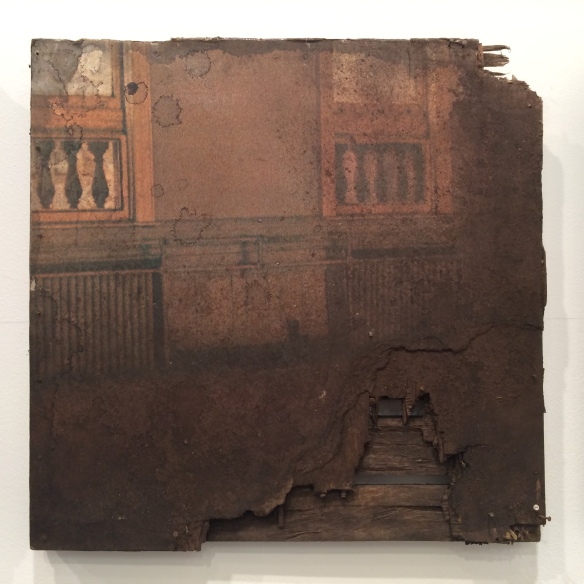
Works by Drew Conrad at the START exhibition stand.
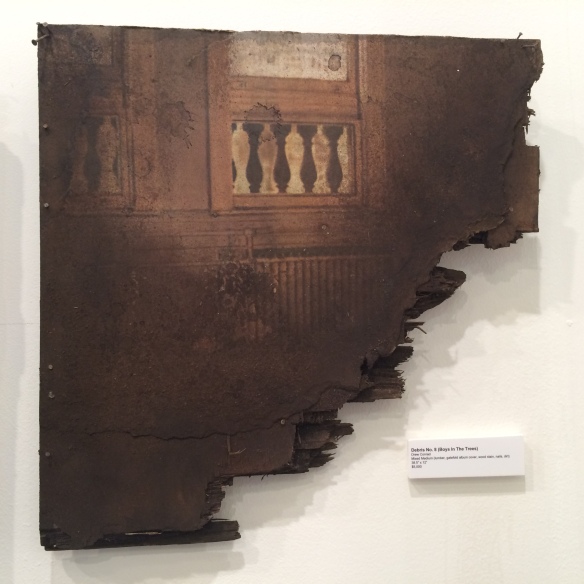
Works by Drew Conrad at the START exhibition stand.
We particularly liked the Yiri Arts exhibition stand that had a cool, young vibe with challenging art works displayed and what felt like edgy and interesting curating.
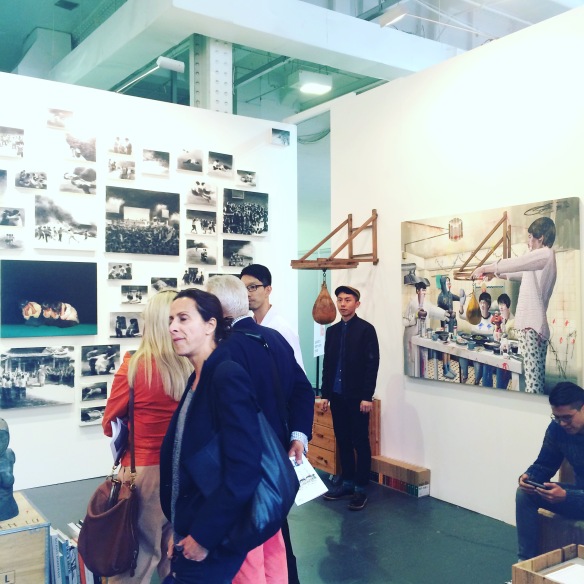
Yiri Arts
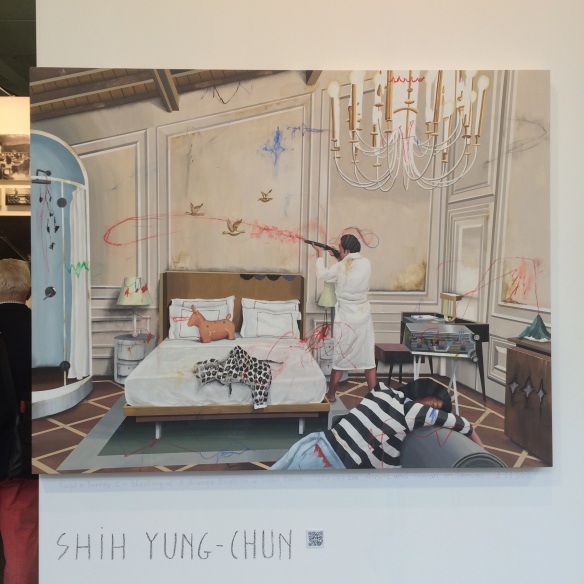
Yiri Arts
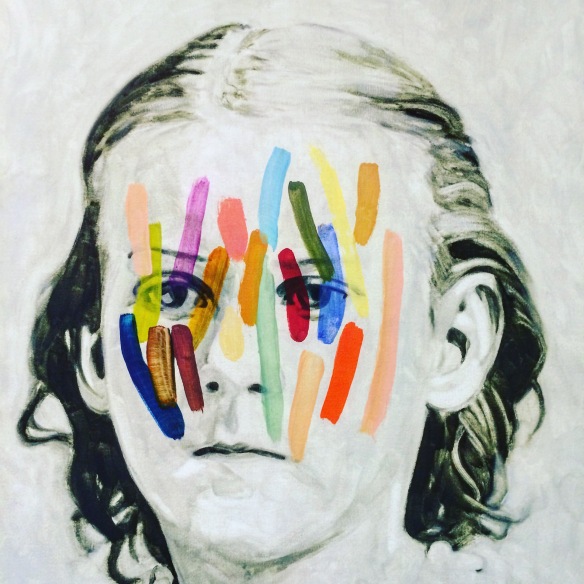
Yiri Arts
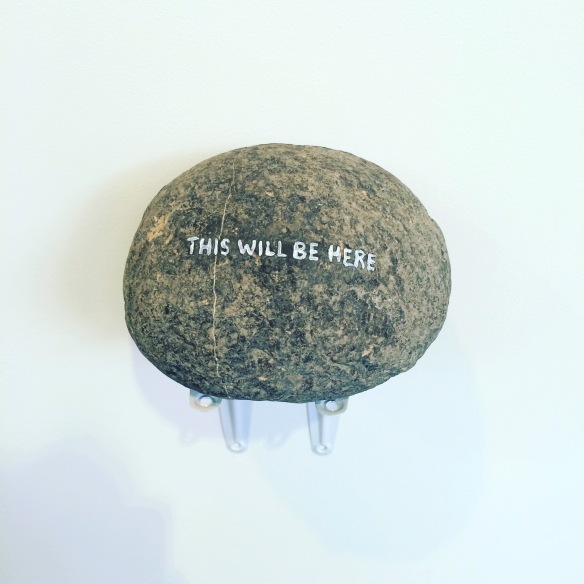
Yiri Arts
Here’s a few snaps of my other best bits!
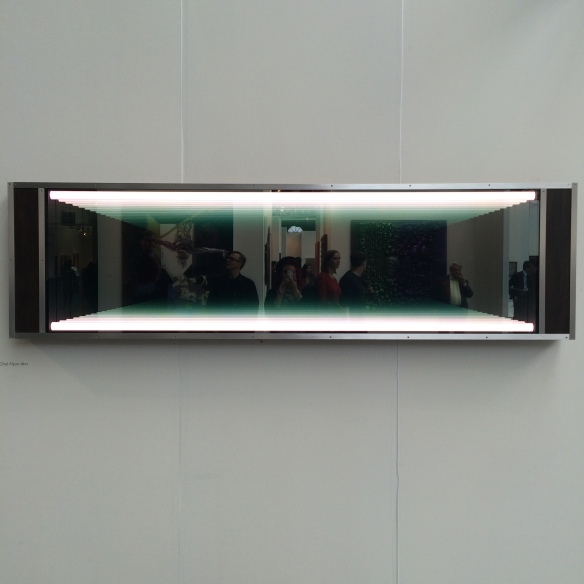
Sweet reflections.
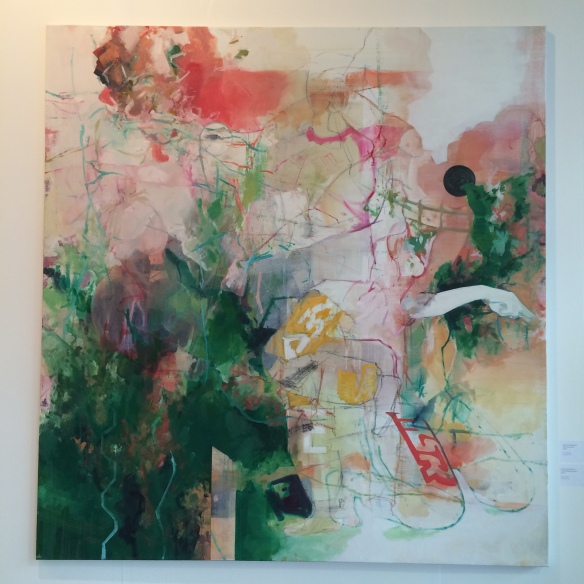
Sean Crossley at Anna Marra Contemporanea
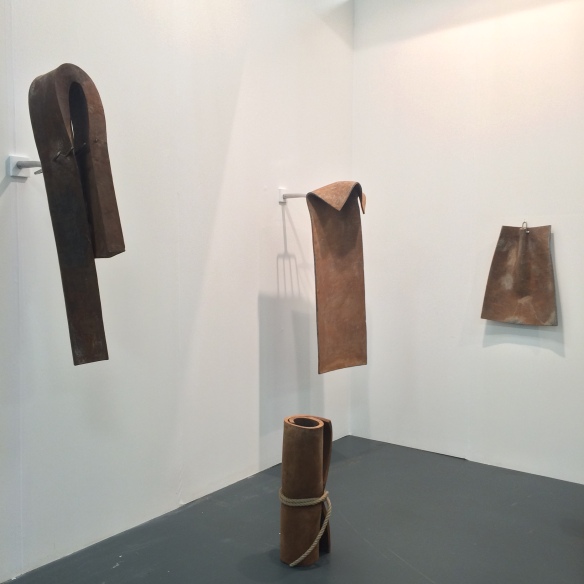
Julian Page & Joanna Bryant
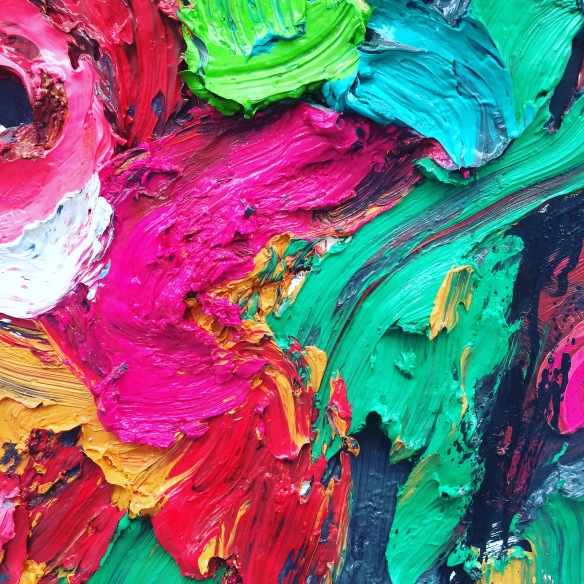
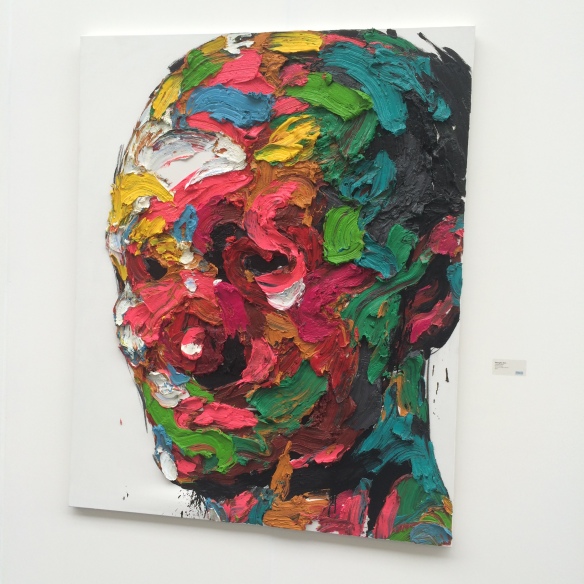
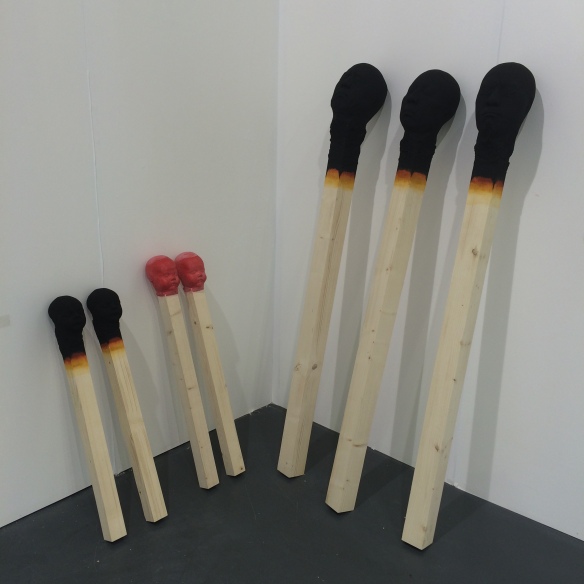
Wolfgang Group of 3 matches
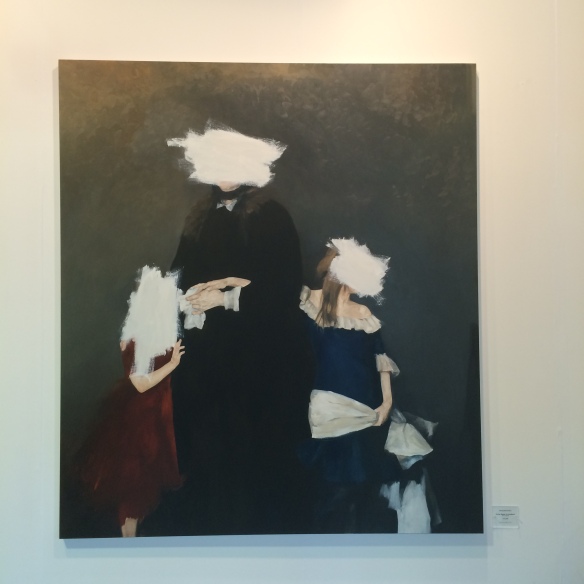
Wanda Bernardino at Bo-Lee
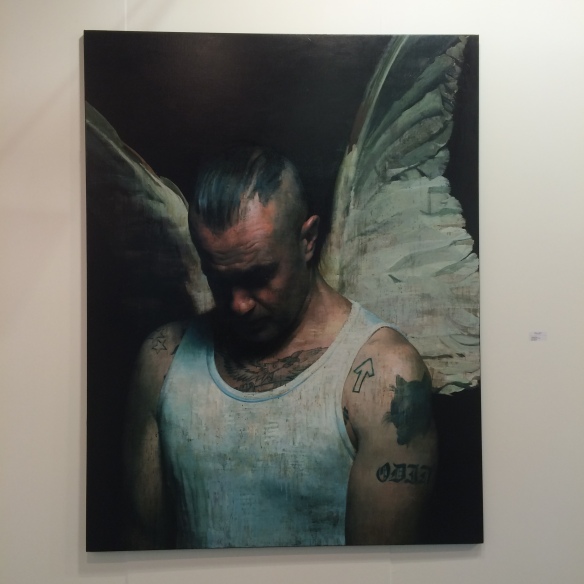
Francois Bard at Olivier Waltman
There were also a number of exciting installations and art happenings taking place throughout the weekend. We particularly enjoyed grabbing a glass of wine when revisiting on Saturday afternoon, amongst Philip Colberts FRIED EGG WORLD.
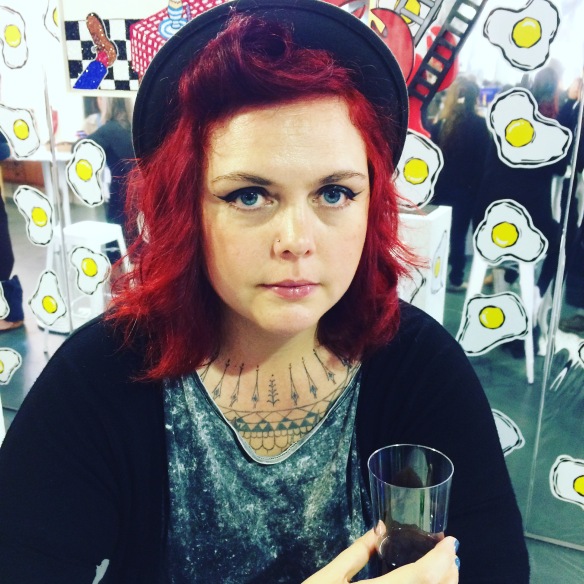
As well as to drink wine, I was back on the Saturday to catch one of the great talks that was part of the ‘Lets Talk About Art’ series, curated by arts writer and editor Sophie Hastings. I’m sure its no surprise that I was most interested in attending ‘ART & WOMEN: Do women (still) have to be naked to get into the Met. Museum?’ which turned out to be one of the most popular talks of the series.
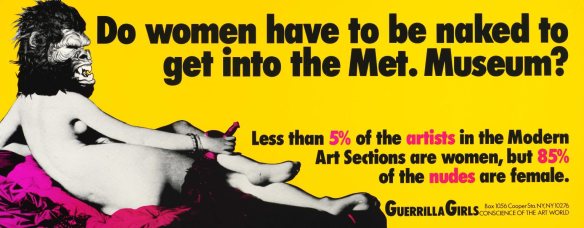
The panel consisted of Valeria Napoleone who as an art collector only collects the work of women artists, Louise McKinney who has been development director for the Lisson and also head of development at the Serpentine Gallery, artist Eloise Hawser and Carol Howell who has been head of education & public events at the Whitechapel Gallery and was part of Tate Modern’s set-up team. She is now director of The Foundling Museum and for me was a particularly inspiring and interesting member of the panel.
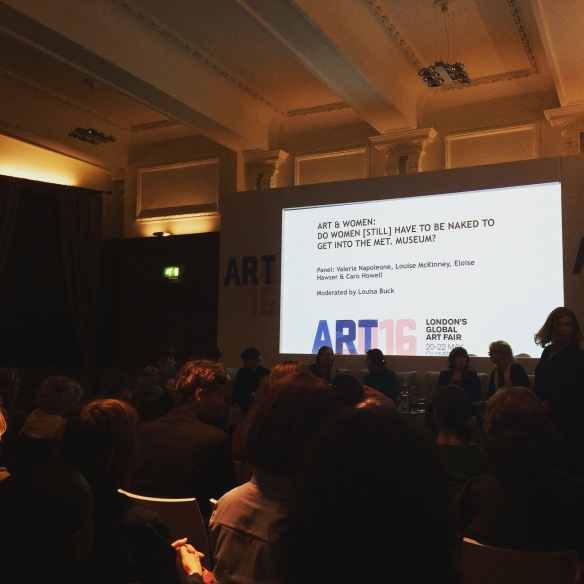
Revisiting the question posed by the Guerrilla Girls 3 decades ago, this panel of high profile women of the art world were asked to begin by reflecting on some grim but for me expected statistics including that 70% of those graduating from art school in the UK identify as women and yet only 20% of artists that are represented by galleries are women. Artist Eloise Hawser spoke of her sense of “otherness” in the art world in response, and mentioned women’s exclusion from the art world historically, seeming to make some links between then and now, as if such wounds could be hard to heal.
It was noted also that although as curators and directors women seem to now be finding more of a place that galleries, even those run by women, still only represent a small number of women artists, relatively speaking. The question as to why this may be was posed and I was struck to a degree by how little it seemed that the question might have been directed at this panel of women before.
Don’t they ask themselves every day?
There was an overall transparent and engaging sense of the panel working through the question together with some exasperated cries of “…do we just need to change the world!?” yet I couldn’t help but feel the familiar sense that here were women that feared to say too much, weather consciously or not.
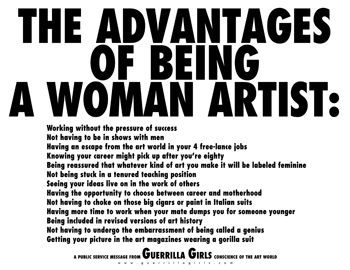
Carol Howell commented on the age old fear of being seen as the “whining women” yet told some refreshingly candid stories of her own experience of not being taken seriously professionally. I really enjoyed her contributions to the discussion where she also spoke of her first experience of having a female superior and the solidarity and modelling of confidence that came with this.
Louise McKinney quoted a colleague who she described as being “very French” about the whole thing in resolving “Well, that is the world”. It felt difficult to not be disappointed by this comment that felt to come with equal helpings of defeatism and privilege.
The subject of “the market” was mentioned and the fear of “investing” in women artists due to their tendency to have children and abandoned their careers, their passions their sense of selves, seemed to dominate.
There were comments around the need for women to support and help each other more professionally that also felt terribly victim blaming and I was struck by the potential need in women when posed with such questions to look inward for blame and solutions. Words of wisdom came again for Carol Howell who spoke of her desire for more male allies during an incident of being professionally undermined.
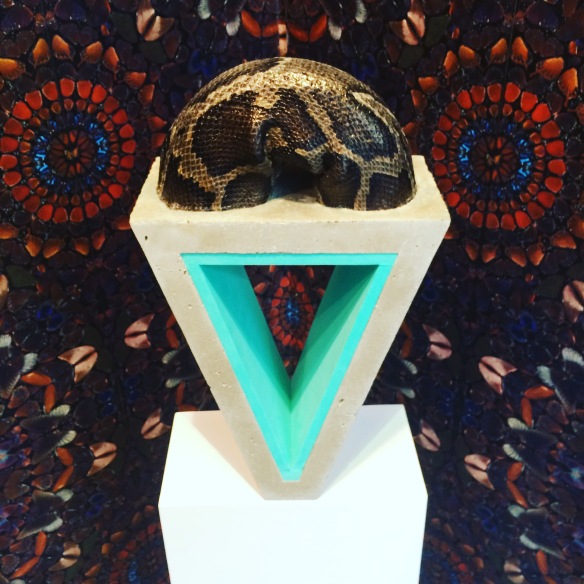
Polly Morgan
What I felt was lacking was a serious consideration of a society that of course in all ways is created to meet the needs of men. More often that not, the needs of women involve having children and all the economic and practical supports that need to go with that. With childcare costing more than most women can earn and policy in the work place that still does not support and privilege women who choose to have children, it is little wonder that women are still seen as a bad investment that may abandon ship as soon as the clock starts ticking.
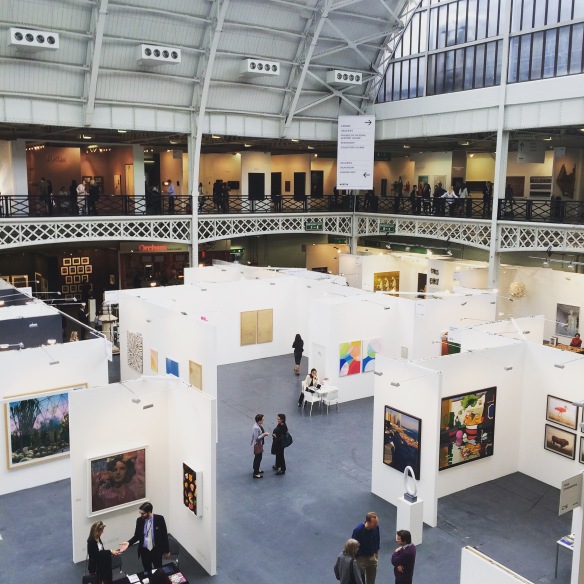
Yet what about outside the market? What do we miss out on, what does the art world lack when women are still so under represented?
For me art is a dialogue, public debate, a conversation. Art is equipped to have some of the most important social and cultural conversations and men have nearly always controlled the conversations because they have tended to control the platforms.
“That’s the world” is just not good enough for me, no matter how French it may sound (not very probably!) and what the panel did highlight for me is that women are now in greater positions to control the platforms, they just need to now start working on the conversations.
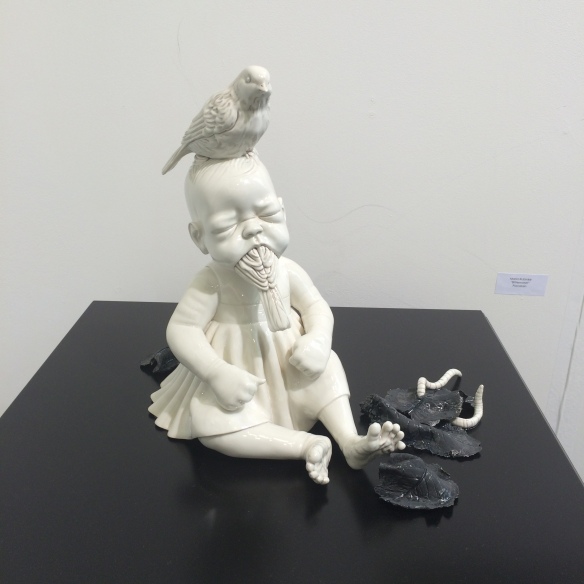
Maria Rubinke “Bittersweet”
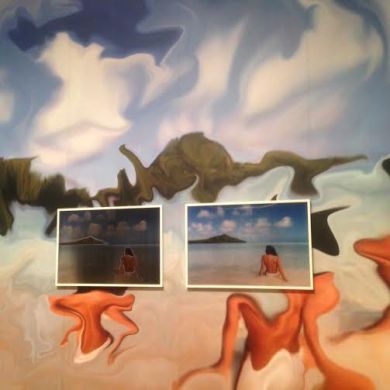 -Constant Dullaart, Jennifer in Paradise
-Constant Dullaart, Jennifer in Paradise
